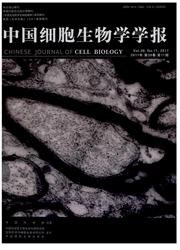

 中文摘要:
中文摘要:
间隙连接蛋白43(connexin 43,CX43)是间隙连接蛋白家族的重要成员之一,参与体内众多生理和病理过程的调控。结构上,该蛋白由氨基端、跨膜结构及羧基端三部分组成,其羧基端上存在大量蛋白结合位点。通过这些位点,CX43能够与不同的蛋白发生相互作用:一方面,影响CX43自身的磷酸化状态,从而调控其降解、亚细胞定位以及装配等过程;另一方面,CX43羧基端还能够通过某些特定的结合位点,调控其他蛋白分子的功能状态,从而影响信号转导,调节细胞的生物学功能。近年来研究发现,该蛋白的羧基端(carboxyl terminal)显著地影响肿瘤细胞/肿瘤干细胞的生物学特性。该文就CX43羧基端的结构特点、与蛋白质的相互作用位点、调控肿瘤细胞/肿瘤干细胞增殖、迁移、自我更新和成瘤能力的作用机制进行简要综述。
 英文摘要:
英文摘要:
Connexin 43(CX43), a member of connexin family, performs crucial roles in regulating diverse physiological and pathological processes in eukaryotic cells. This protein is composed of three parts, including the amino terminal, transmembrane structure and carboxyl terminal. In the carboxyl terminal of CX43, there are many protein binding sites. Through these sites, CX43 can interact with different proteins. On the one hand, those sites influence the phosphorylation state of CX43 and then regulate its degradation, subcellular localization, assembly process, etc. On the other hand, the carboxyl terminal of CX43 also influences the functional state of other protein molecules, thus affecting the signal transduction and regulating the biological function of cell. Recent studies revealed that the carboxyl terminal of CX43 played a critical role in regulating the biological features of cancer cells or cancer stem cells. Here, we make a brief review about the structural features, the protein-protein interaction sites and the molecular mechanisms for regulating tumor cell proliferation/migration of this domain in CX43.
 同期刊论文项目
同期刊论文项目
 同项目期刊论文
同项目期刊论文
 期刊信息
期刊信息
